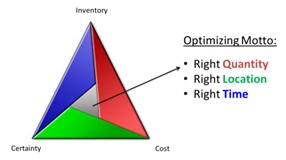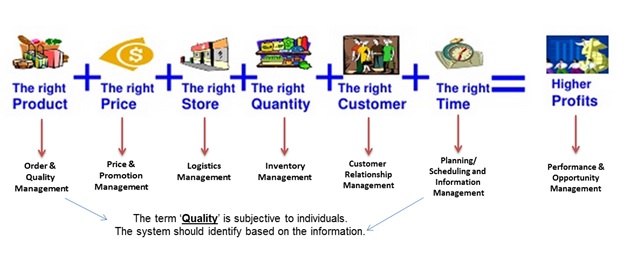The Background:
In the modern world of multi-channel retail enterprise, it is inevitable that the businesses cannot exist without heterogeneous applications dealing with different functionality. For example, consider few of the applications for a typical retail enterprise:
- Inventory Management System
- Order Management System
- Order Fulfillment System
- Logistics Management System
- Price and Promotion Management System
- Customer Relationship Management System
When it comes to business, both entrepreneurs and customers always look for more values for less cost. For example, the business looks to optimize the cost of manufacturing, inventory and transportation and customers tend to switch to channel that could afford less price.
Need for Cost-Effective Systems
The world of e-Commerce is changing rapidly and thus there is a need for automation, and reduction of costs. Multi-channel business applications are mostly defined as participating in the exchange of electronic data. However, it means much more than just the exchange of electronic data.
- Supporting business transactions in real-time;
- Enabling and orchestrating communications with multiple systems across the supply chain;
- Using standards and the Internet to conduct interactive business-to-business communications.
The above listed business to business (B2B) applications need to manipulate data in different formats to integrate disparate applications and systems. So, it is important that there is the best decision making process in place that would help the organization to optimize the cost, inventory and time. Consider the below diagram:
The Need for Timely Information
Data that is critical to business operations should be integrated real-time. The business data timely brought to the system can either help prevention of loss of sales or can help the user to choose more options. To understand real-time integration better, it is worth answering the below questions:
- How would the inventory systems decide the best inventory level for the given time?
- How would the order management system predict the potential increase in sales?
- How would the inventory systems take into account the inventory in transit?
- How would the price and promotion management systems arrive at the best deals that suit different locations?
- How would the logistics system effectively combine the transportation of inventory between different locations?
If the multi-channel retail systems use obsolete data, the complex decision support systems for the above solutions would always leads to unsuited inventory, redundant transportation and they always result in the loss of sales or over-spending. The strategy for the above lies in the below
- The inventory systems should instantly receive the new inventory and sales details in real time.
- Order management systems should be supported with the availability and predicted sales details in real time.
- The inventory systems should receive the locations of the in-transit inventory to take informed decisions.
- The price and promotion management systems should receive the PoS data to decide the effectiveness of the current promotion strategies.
- The logistics system should always get PoS data to transport the inventory from the nearby locations, so that the PoS system is certain about the ETA of the inbound inventory.
Need of Real-Time Integration for Cost-Effective Systems
Based on the complexity of the source and target applications, the integrations can be designed with the below combinations:
- Real-Time Integration between systems using SOA (Service Oriented Architecture):
- Sales integration between PoS and Inventory Management systems., etc
- Near Real-Time Integrations using the Messaging systems:
- Synchronization of Price and Promotion Data to Order Management systems.
- Large-Data Integrations using batch processing for the decision support systems:
- Statistical information to support descriptive, predictive and prescriptive sales details.
Consider the below systems involved in multi-channel retail systems where the data is cascaded to different systems for different purposes:
Business Enablers by Real Time Integration
By integrating business-critical data in real-time, the business would gain advantage over competitors. For instance, a retailer would have immediate access to centralized inventory systems and their sales data from stores. Once the real time data is available, other systems should make use of it by retrieving it real time and thus enabling enhanced decision making.
When the enterprise has connected systems integrated as in the diagram, business systems can arrive at constructive promotions based on the inputs from different systems, statistics of past sales and inventory into predictive future promotions and inventory. Inventory systems can be updated real-time, making it possible to check inventory by location and varying promotion offers for different channels of sales. Some out-of-the-box social network integrations can help the enterprise even about what the users search and buy online in different geographic locations and introduce innovative sales channels for online or brick-and mortar stores by means of modern devices.
These real time integrations would help the business not only to enhance the existing sales but to effectively drive the business exponentially with new opportunities and avenues like never before.
Note: The above article is authored by Mr.Siva Thankamanee from Enterprise Integration & Information Management Practice @ Aspire Systems.
- Why retail brands are gunning for iPaaS-led omnichannel integration - January 7, 2020
- 5 New Year Resolutions to Accelerate Digital Transformation with Dell Boomi in 2020 - December 30, 2019
- How iPaaS drives seamless order fulfillment journeys - December 18, 2019










Comments